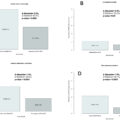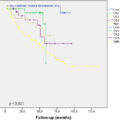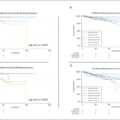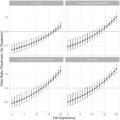Highlights
- •
For image guided prostate bipsy, MRI-microUS and MRI-TRUS fusion biopsy techniques were associated with similar rates of GG upgrade on final pathology after radical prostatectomy.
- •
Both techniques had a lower rate of GG upgrade compared to microUS only biopsy or TRUS only biopsy.
- •
There was no difference between GG upgrade between microUS only guided biopsy and TRUS biopsy.
- •
In a moderately sized cohort this is the first to investigate pathologic concordance in MRI-microUS fusion compared to MRI-TRUS fusion biopsy.
Abstract
Background and Objective
Comparative studies among biopsy strategies have not been conducted evaluating pathologic concordance at radical prostatectomy(RP), especially with novel micro-ultrasound (micro-US) image-guided biopsy.
Methods
A retrospective study among patients with PCa who underwent RP following TRUS, MRI-TRUS fusion, microUS, or MRI-microUS fusion biopsy in a multi-site single institution. We compared GG-upgrade from biopsy to RP based on highest GG in any biopsy core and examined clinical/pathologic factors associated with pathologic upgrading using descriptive statistics, and multivariable logistic-regression analysis.
Results
429 patients between 1/2021 and 6/2023 including 10 (25.6%) who underwent systematic TRUS, 237 (55.2%) MRI-TRUS, 67 (15.6%) MRI-microUS and 15 (3.5%) micoUS-alone biopsy prior to RP. 78 (18.2%) were upgraded on final pathology (TRUS 31 (28.2%), MRI-TRUS 31 (13.1%), MRI-microUS 10 (14.9%), microUS: 6 (40%)) and 99 downgraded. 14 (3.5%) experienced a major upgrade (≥2 GG increase). On multivariable-analysis both MRI-TRUS (odds ratio, OR: 0.31,95% CI:0.17–0.56, P < 0.001) and MRI-microUS (OR: 0.43,95%CI: 0.19–0.98, P = 0.044) were associated with lower odds pathological-upgrade compared with TRUS biopsy alone. No significant differences in the odds of upgrade between TRUS and microUS alone ( P > 0.05), or between MRI-microUS and MRI-TRUS( P = 0.696) on pairwise comparisons. MRI-microUS was associated with lower upgrade compared with microUS (OR: 0.26,95% CI:0.08–0.90, P = 0.034). No difference among the biopsy strategies in pathologic downgrading or overall GG concordance. Limitations include retrospective analysis, inter-clinician experience and lesion selection in varying biopsy techniques.
Conclusion
Both MRI-microUS and MRI-TRUS fusion were associated with similarly improved GG concordance compared with TRUS biopsy. No significant differences between microUS-alone and TRUS or between MRI-microUS and MRI-TRUS fusion approaches, may suggest similar accuracy performance for disease sampling.
What does the study add
To our knowledge, this is the first study to investigate GG concordance based on type of biopsy, especially microUS related GG upgrading after RP. In a moderately sized cohort this is the first to investigate pathologic concordance in MRI-microUS fusion compared to MRI-TRUS fusion biopsy. Our study may help urologists in counseling patients after biopsy and choosing the ideal image guided biopsy technique, however randomized controlled trials are needed to validate our results.
Patient Summary
We performed a study to see if the type of prostate biopsy, including use of MRI assistance as well as a new image-guided biopsy using a more advanced ultrasound, was better able to identify the aggressiveness of prostate cancer patients had. We found that the new biopsy type when fused with MRI and the existing MRI-guided biopsy type were similar in predicting the type of prostate cancer found at prostate surgery. These were both more accurate than the conventional ultrasound only biopsy.
1
Introduction
Accurate diagnosis and grading is critical for the management of prostate cancer (PCa) [ ]. The integration of image guided biopsy, primarily MRI-ultrasound fusion, has led to improvements in the diagnostic accuracy of PCa as compared with transrectal ultrasound [ ] systematic sampling alone [ ]. In particular, prostate MRI-ultrasound fusion biopsy (MRI-TRUS) is associated with increased detection of high-grade PCa, as well as improved pathologic concordance between biopsy and radical prostatectomy (RP) [ ]. However, routine use of prostate MRI is resource intensive and inaccessible to many patients and is associated with potential for errors in image registration and lesion targeting. For these reasons, strategies to improve the accuracy and execution of image guided biopsy remain highly valuable [ , ].
Endorectal micro-ultrasound (microUS) is a real-time imaging strategy that may improve the diagnostic accuracy of prostate biopsy [ ]. Compared to an imaging frequency of 6–9 Mhz with conventional TRUS, microUS utilizes a 29 MHz US frequency and has a higher crystal density. As a result, microUS can achieve spatial resolutions of 70 microns as compared with 300 microns with conventional TRUS [ ]. Prostate Risk Identification Using MicroUS Scale (PRIMUS), a standardized grading system for anatomical characteristics visualized on microUS and scaled 1–5 has also been validated [ ]. There is emerging evidence that MicroUS biopsy alone may be comparable to MRI-TRUS fusion biopsy and may augment diagnostic accuracy when fused with MRI imaging (MRI-microUS) [ ]. MicroUS has also been proposed as a stand-alone imaging modality that could obviate the need for MRI, and improve the value and convenience of PCa diagnosis.
In light of growing availability of MicroUS for prostate biopsy through a 510k cleared ExactVu™ system, there is an unmet need to evaluate the diagnostic accuracy in comparison with other image-guided prostate biopsy techniques, as it may serve as an alternative or supplement to MRI guidance. Furthermore, there is an absence of rigorous comparative evidence considering pathologic concordance at RP, a gold standard reference used to assess sampling accuracy. Therefore, the objective of this study was to compare Gleason Grade Group(GG) concordance between transrectal prostate biopsies performed via systematic TRUS, MRI-TRUS fusion, microUS alone, or MRI-microUS fusion and final pathology at time of RP conducted in the real-world clinical setting.
2
Methods
2.1
Study Design and Patient Selection
We performed a retrospective database review of patients diagnosed with PCa who underwent robotic assisted RP in a single multi-site institution between January 2021 and June 2023, coinciding with integration of microUS at our site. Patients were included who had both prostate biopsy and final RP pathology available. Patients were excluded if there was no pathological information accessible about their prostate biopsy.
2.2
Procedure
Patients were placed in the left lateral decubitus position and had either a systematic transrectal conventional ultrasound guided biopsy [ ], MRI-TRUS fusion biopsy, microUS guided biopsy or MRI-microUS fusion biopsy. TRUS biopsy alone were patients who primarily received their TRUS biopsies at outside institutions (71%), and those with PIRADS≤2 findings on MRI. Patients received microUS biopsy without MRI fusion either because they went directly from elevated PSA to biopsy after shared decision making, had PIRADS <3 lesions on MRI, or were unable to have MRI because of claustrophobia or implants. Multiparametric MRI guidance utilized a 3T system and an external phased array. MRI uses a combination of multiplanar T2-weight imaging, diffusion weighted imaging and dynamic contrast enhanced imaging [ ]. A 1.5T system is used for patients with pacemakers or pelvic/hip prostheses. For MRI-TRUS fusion biopsy, the multiparametric MRI image is directly fused with the real-time US image using the Artemis TM system. A targeted biopsy of 3–5 cores per operator preference was performed for any clinically significant Prostate Imaging Reporting and Data System (PIRADS) lesion, followed by the standard 10–12 core template biopsy.
MicroUS biopsies were performed by 7 urologists using the ExactVu TM microUS imaging system. Suspicious lesions on the PRIMUS scale or by cognitive visualization were biopsied in 3–5 cores along with a standard templated biopsy. The cores for the standard templated biopsy were selected by the performing urologist and not the software system. The MRI-microUS fusion biopsy was performed using the Exact Imaging system software (Exact Imaging, Markham, Canada). Fusion biopsy choice, whether MRI-microUS fusion or MRI-TRUS fusion, was based on system availability and clinician preference.
RP was performed robotically, by 1 of 9 surgeons. RP approach, and the use of single port or multiport robot for prostatectomy was at the surgeon’s discretion.
2.3
Pathology Analysis
All prostate biopsies were independently reviewed by genitourinary pathologists and each biopsy core was assigned Gleason score based on the 2019 ISUP Gleason scoring system. For TRUS only biopsies, almost all (97.2%) pathology slides were read by intra-institutional pathologists regardless of whether their biopsy was performed within our institution or elsewhere. Similarly, RP specimens were received fresh, photographed, step sectioned and reviewed by two genitourinary pathologists for Gleason grading, specimen surgical parameters and cellular testing.
2.4
Study Outcomes
The primary outcome of the study was the occurrence of any Gleason Grade (GG) Group upgrade between biopsy and RP. The secondary outcomes included demographic and pathologic factors affecting upgrade, Gleason downgrading, defined as any decrease in pathologic GG from most recent biopsy, as well as GG concordance (equal Gleason grade group on biopsy and RP). In addition, major upgrade was defined as an increase in final pathology GG of ≥2 from GG at biopsy.
2.5
Statistical Analysis
We described clinical and demographic characteristics of the study cohort. For patients who received more than one biopsy, we considered findings on the biopsy in closest proximity to prostatectomy. We compared the distributions of patient clinical, demographic, and pathologic characteristics across biopsy types using Analysis of variance (ANOVA) and Pearson chi-squared analyses. Univariable and multivariable logistic regression were performed to identify factors associated with pathologic upgrade. Variables that were significant ( P < 0.05)on univariable analysis, and type of prostate biopsy, regardless of statistical significance, were included in the multivariate model. Pairwise comparisons were performed between biopsy techniques. P-values were reported as 2-sided and values less than 0.05 were considered statistically significant. Statistical analysis was performed using StataMP. This study was approved by the Yale University Institutional Review Board (IRB 2000037149)
3
Results
A total of 429 patients eligible patients were identified in the study period. 110 (25.6%) patients received systematic TRUS biopsy, 237 (55.2%) MRI-TRUS fusion biopsy, 67 (15.6%) had MRI-microUS fusion biopsy and 15 (3.6%) had microUS biopsy alone prior to RP. There were no significant differences in the distributions of age, self-identified race, PSA, prostate volume, prior biopsy status and months between biopsy and RP across the biopsy approaches( P > 0.05) ( Table 1 ). The average time between biopsy and RP was 4.2 ± 5.0 months. PIRADs score was calculated for patients who received MRI guided biopsy. For patients with MRI-TRUS guided biopsy, 21 (8.9%) had PIRADS 3 lesion(s), 120 (50.6%) had PIRADS 4, and 87 (36.7%) had PIRADs 5 lesions. For patients with MRI-microUS fusion biopsies, 3 (4.5%), 38 (56.7%), and 22 (32.8%) had PIRADS 3,4 and 5 lesions respectively.
| Transrectal Ultrasound [ ] | MRI-TRUS | MRI-microUS | MicroUS only | p-value | |
|---|---|---|---|---|---|
| n | 110 (25.6%) | 237 (55.2%) | 67 (15.6%) | 15 (3.5%) | |
| Age (years) | 63.5 ± 6.9 | 64.3 ± 5.9 | 64.9 ± 6.9 | 63.7 ± 3.8 | 0.51 |
| Race | 0.66 | ||||
| White | 101 (91.8%) | 214 (90.3%) | 64 (95.5%) | 14 (93.3%) | |
| Black | 4 (3.6%) | 17 (7.2%) | 3 (4.5%) | 1 (6.7%) | |
| Asian | 5 (4.6%) | 6 (2.5%) | 0 | 0 | |
| BMI (kg/m 2 ) | 28.1 ± 3.7 | 28.8 ± 4.5 | 28.5 ± 3.4 | 27.6 ± 4.4 | 0.40 |
| PSA (ng/dL) | 8.0 ± 6.8 | 9.3 ± 7.9 | 8.0 ± 4.3 | 8.8 ± 5.1 | |
| Prostate Volume (cc) | 41.2 ± 17.4 | 46.1 ± 24.4 | 44.5 ± 25.2 | 44.1 ± 15.1 | 0.32 |
| Biopsy Gleason Score | 0.62 | ||||
| Group 1 | 11 | 17 | 4 | 1 | |
| Group 2 | 44 | 114 | 29 | 6 | |
| Group 3 | 26 | 57 | 21 | 2 | |
| Group 4 | 22 | 32 | 7 | 4 | |
| Group 5 | 7 | 17 | 6 | 2 | |
| Digital Rectal Exam | 0.53 | ||||
| Normal | 87 (79.1%) | 183 (77.2%) | 57 (85.1%) | 11 (73.3%) | |
| Abnormal | 23 (20.9%) | 54 (22.8%) | 10 (14.9%) | 4 (26.7%) | |
| MRI Maximum PIRADS Score | < 0.01 | ||||
| 1 | 4 (3.6%) | 0 | 0 | 0 | |
| 2 | 6 (5.5%) | 4 (1.7%) | 4 (6.0%) | 5 (33.3%) | |
| 3 | 4 (3.6%) | 21 (8.9%) | 3 (4.5%) | 0 | |
| 4 | 23 (20.9%) | 120 (50.6%) | 38 (56.7%) | 3 (20.0%) | |
| 5 | 22 (20.0%) | 87 (36.7%) | 22 (32.8%) | 3 (20.0%) | |
| Prior Biopsy | 0.26 | ||||
| Biopsy Naïve | 88 (80.0%) | 169 (71.3%) | 46 (68.7%) | 10 (66.7%) | |
| Prior Negative | 0 | 1 (0.4%) | 0 | 0 | |
| Active Surveillance | 22 (20.0%) | 67 (28.3%) | 21 (31.3%) | 5 (33.3%) | |
| Months between Biopsy and Prostatectomy | 4.4 ± 5.7 | 3.8 ± 5.4 | 2.6 ± 1.6 | 2.2 ± 2.1 | 0.08 |
Stay updated, free articles. Join our Telegram channel

Full access? Get Clinical Tree







